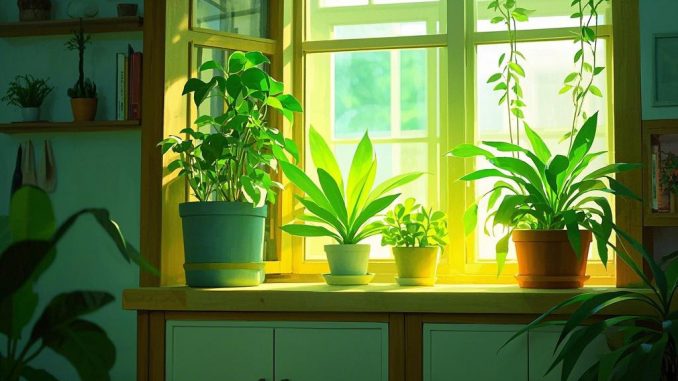
When we talk about decorating our homes with green plants, we usually think of how they can enhance the beauty and freshen the air. However, there are some green plants that should not be placed in our homes due to various reasons.
I. Poisonous Plants
1. Oleander (Nerium oleander)

- Oleander is a very common ornamental plant, but it is highly toxic. All parts of the plant, including the leaves, flowers, and stems, contain cardiac glycosides. These substances can be fatal if ingested, even in small quantities. In case of accidental ingestion, it can cause symptoms such as vomiting, diarrhea, arrhythmia, and even cardiac arrest. It is especially dangerous for households with children or pets, as they may be curious and chew on the plant.
2.Dieffenbachia (Dieffenbachia spp.)

- Dieffenbachia is also known as the “dumb cane.” Its cells contain toxic substances like calcium oxalate crystals. If a person or pet chews on the leaves, it can cause severe pain and swelling in the mouth, throat, and digestive tract. This can lead to difficulty swallowing and breathing in serious cases.
3.Larkspur (Delphinium spp.)

- Larkspur contains alkaloids that are highly toxic. It is particularly dangerous for horses, cattle, and other livestock, but can also be harmful to humans. Ingestion can cause muscle tremors, paralysis, and respiratory failure.
4.Castor Bean Plant (Ricinus communis)

- The castor bean plant is one of the most toxic plants. Its seeds contain ricin, a potent toxin. Accidental ingestion can lead to severe vomiting, diarrhea, abdominal pain, and even death. Even handling the plant without gloves can cause skin irritation for some people.
II. Plants with Strong Smells
1.Spathiphyllum (Peace Lily) in Some Cases
- While the peace lily is a great air – purifier, its white flowers can sometimes give off a strong, almost musty smell. For some people with sensitive noses, especially those with allergies, this smell can cause discomfort, congestion, and watery eyes. It can also add a somewhat “old – fashioned” or “stale” feel to the room.
2.Fatsia japonica
- Fatsia has large, glossy leaves, but it can emit a strong, pungent odor, especially when it is in full bloom. This smell may not be suitable for all living environments, especially small, enclosed spaces like a bathroom or a small apartment living room.
3.Skunk Cabbage (Symplocarpus foetidus)
- As its name suggests, skunk cabbage has an extremely foul smell. It releases this smell to attract pollinators when it blooms. Even when not in bloom, it can sometimes give off a faint but still unpleasant odor. This plant is not recommended for indoor cultivation unless you are in a very large, well – ventilated area.
III. Plants with Invasive Roots
- Bamboo (Certain Species)
- Some species of bamboo, such as the running bamboo, can have very invasive roots. If planted in a pot in the house, its roots can quickly grow out of the pot and cause damage to the container. If it is planted in the ground near the foundation of a house, there is a risk that the roots can infiltrate the foundation, causing structural problems over time.
- Willow (Salix spp.)
- Willow trees have extensive and deep root systems. If a small willow cutting is brought into the house and planted in a pot, its roots can become unruly. They can crack pots and are difficult to control. In addition, willow roots can also absorb a large amount of water, which may not be suitable for indoor environments.
IV. High – Maintenance Plants (Which May Be Inappropriate for Some Homes)
- Orchids (For Beginners)
- Orchids are beautiful but require very specific conditions to thrive. They need the right temperature, humidity, and lighting. For those who are new to plant care, orchids may be difficult to maintain. If the conditions are not met, the orchids may wither and die, which can be frustrating.
- Cacti (For the Unaccustomed)
- Although cacti are generally low – maintenance, they still need proper sunlight and watering. If you accidentally over – water a cactus, it can rot. And for some people, especially those who have a tendency to be careless, cacti with their spines can be a safety hazard if not placed properly.
In conclusion, while green plants can add a lot of charm to our homes, it is important to be aware of the potential risks and problems associated with certain plants. We should choose plants that are suitable for our living conditions, our level of plant – care expertise, and the well – being of our families and pets.

Leave a Reply